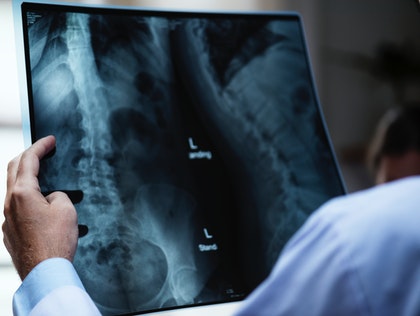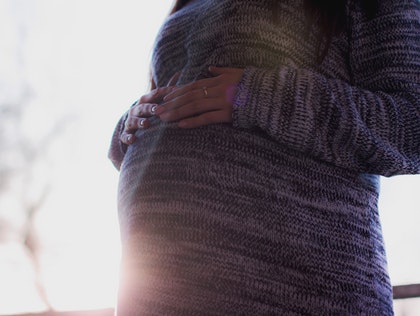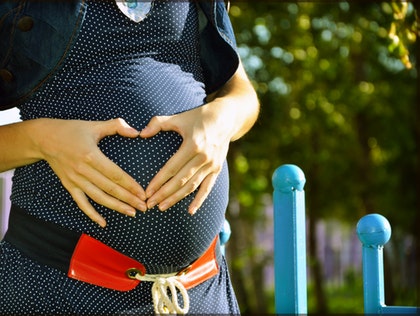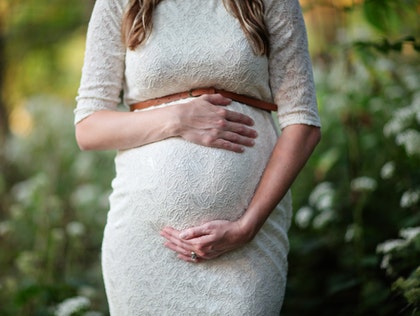During pregnancy, a lot of changes take place in the musculoskeletal system as a compensatory mechanism for the growing fetus. This can have a significant impact on posture, balance, and gait. If not appropriately taken care of, these changes can lead to backache, fall, divarication of recti, and lack of self-esteem and confidence. In this article, we discuss in detail the underlying mechanisms behind those changes and the preventatives measures that can be taken during pregnancy.
People often develop poor posture over the years due to lack of knowledge and awareness. As a result, correction of posture during the pregnancy period sometimes could be challenging. Therefore, a small correction at a time is the key.
However, the benefits of learning about the correct posture can help you beyond pregnancy and prevent musculoskeletal problems in the years to come.
First of all, let us learn about the basic anatomy of the spine.
Normal spine curvature:
Our vertebral column is made up of 33 vertebrae and there are four curvatures in the spine.

These curvatures help in good body movements and distribution of body weight, putting less strain on the muscles.
Looking from the sides, it would show the following 4 curvatures of the spine:
1. Cervical (back of the neck): the curvature is concave, i.e., bent inwards
2. Thoracic (upper back): the curvature is convex, i.e., the bent is outwards
3. Lumbar (lower back): the curvature is concave, i.e., bent inwards
4. Sacrum and coccyx (the region of the tailbone): slight bent outwards and placed in between the pelvic bones.
The aim of a good posture is to ensure maintaining all these four curvatures and correct any exaggeration of any curvature that may develop as a compensatory mechanism during pregnancy. This ensures that the body utilises the least amount of energy to obtain the desired position and least strain on the muscles involved in that action.
During pregnancy, a stable and strong Core is also an important factor for a good posture.
A good posture helps:
1. To reduce aches and pains (including Pelvic Girdle Pain)
2. Better lung capacity and breathing
3. Improves blood circulation (especially during sleeping)
4. Good health and a sense of wellbeing
5. Self-confidence.
6. Fewer trips and falls.

What changes happen during pregnancy?
Physiological changes during pregnancy lead to alteration of posture, balance, and gait.
The centre of gravity of the body moves forwards mainly due to the growing fetus and enlarged breasts during pregnancy.
The changes are as follows:
POSTURE
The following compensatory postural changes take place during pregnancy:
1. Increased Lumbar lordosis:
The concave curvature in the spine might be more pronounced due to the forward pull of growing fetus. This might result in ‘swayback’ position (‘Lordosis’).
2. Increased Cervical lordosis:
The normal slight forward curvature of the spine in the neck (cervical) area is called cervical lordosis.
During pregnancy, the breasts grow in size and might lead the neck curvature to move forwards. Also, the forward pull on the neck is aggravated by the growing fetus.
Both the shoulders also can move forward and inward due to this. The chin also extends forwards.
3. The sacrum tilts backwards.
4. The head tilts backwards.
5. Legs are wider apart during standing.
What makes posture worse?
1. Pre-pregnancy poor posture.
2. Spine related problems, such as kyphosis or scoliosis.
3. Core instability (i.e., weak tone and strength of the core muscles).
4. Pregnancy complications, such as multiple pregnancies, polyhydramnios.
5. Raised BMI
6. Excessive weight gain during pregnancy.
Top tips to reduce back pain during pregnancy:
1. Stay active and perform regular exercise.
2. Rest adequately.
3. Accept help from family and friends, such as lifting weights.
4. Maintain good posture
5. Strengthen core muscles.
The basic principles of correcting the posture are to ensure the following:
1. The body weight is distributed evenly along the lower extremities.
2. The normal spine curvatures are maintained.
3. Exaggeration of the spine curvatures is corrected.
4. Avoid twisting/ bending movements of the spine whenever possible or keeping to a minimum.
5. Contract abdominal and pelvic floor muscles (including the gluteus) during movements. They help in the stability of the pelvis and the trunk.
This will help in reducing excess strain on muscles, ligaments and joints and therefore, prevent aches, pains, such as PGP.
Obtaining the right posture takes time. Please check and self-correct the posture whenever possible, such as standing in a queue.
A) Standing:
1. Pulling the crown of the head straight up towards the ceiling. This will also help in increasing the distance between the rib cage and the pelvis. (‘Stand tall’)
2. Chin pulled back towards the spine.
3. Shoulders are pulled outwards and downwards.
4. Pull belly button towards the spine. (‘abdominal bracing’)
5. Contract the gluteus.
6. Knees slightly moved forwards and not locked.
7. Legs are only hip-distance apart.
B) Sitting:
People often underestimate the need for good sitting posture, as this can put a huge strain on the back muscles. It is estimated that during sitting the amount of pressure on the spine is 16 times more than lying down position (during standing it is 4 times higher than lying down).
1. To bring the buttocks at the very back of the seat.
2. Preferably use a small pillow or rolled-up towel in the lower back. This would maintain the lumbar curvature of the spine.
3. Pulling the head straight up. This will also help in increasing the distance between the rib cage and the pelvis.
4. Shoulders are pulled outwards and downwards.
5. You may prefer to use a footrest.
6. Do not cross thighs, as any twisting movement on the pelvis puts more pressure on the involved muscles.
7. Pull abdominals towards the spine. (‘abdominal bracing’)
8. Try not to sit for more than 30 minutes whenever possible.
9. Sit with your legs apart of the hip length.
10. Avoid sitting on low stool or chair.
C) Getting out of the sitting position
1. Bring yourself gently to the front of the chair.
2. Push on the leg muscles to stand
D) Lifting and bending
(eg.Placing laundry in the washing machine)
1. Bend the hips and knees to lower the body, avoid stooping forward the spine, to lift weights.
2. Always keep the back as straight as possible.
3. Get as close to the object as possible.
4. Avoid squatting.
5. Avoid twisting the spine while carrying a load.
Special circumstances:
Shopping bags:
Carry approximately equal weights on both hands. If possible, use backpacks to carry rather than carrying them on hands.
Lifting the baby/ car seat in and out of the car:
You may wish to rest one of the knees on the seat when lifting from inside the care.
Lifting heavy objects (such as a toddler, vacuum cleaner, washings, etc):
Avoid whenever possible. Use the leg muscles to push, keeping the back straight and avoid forward stooping. Pull the abdominal muscles (‘abdominal brace’) and gluteus.
E) Walking
Going for a walk regularly is good for health and fitness. If you suffer from PGP, then walking can be painful especially on uneven surfaces such as a beach or going uphill.
1. Maintain the posture like standing and ‘Walk tall’
2. Pull belly button towards the spine. (‘abdominal bracing’)
3. Contract the gluteal muscles of the back when the feet touch the ground. This would help in maintaining an upright posture and prevent sidewise waddle.
4. While taking stairs, take one at a time.
F) Sleeping
1. Lie on your side, especially after 16 weeks to prevent compression of blood vessels on the back by the growing uterus.
2. Keep a pillow between the legs to keep them parallel.
3. Place a towel below the bump.
4. Keep the knees parallel when turning sides in the bed. Keep contracting the muscles of the abdomen and pelvic floor while rolling/ turning.

Getting out of bed
1. First, roll onto the edge of the bed.
2. Push your body with your arm/ hand.
3. Lower your legs at the same time when you push with your hand.
G) Pushing
Avoid pushing heavy objects like big shopping trolleys. If your work involves these activities, please speak to your manager to discuss modification of the job.
H) Dressing
Always avoid standing on one leg and sit down whenever possible during changing clothes.
I) Sexual intercourse
Lying on the sides or kneeling down on all fours is preferable.
Alongside correcting the postures, it is essential to perform exercises to strengthen the core muscles
What is the Core?
The core of the body refers to the bones and the muscles that constitute the trunk and includes the area between both the shoulders and hips.
The core muscles include:
1. ‘Abdominals’: Rectus abdominis, Transverse abdominis, Obliques
2. Back muscles: Lower Trapezius, Erector Spinae, Lateral Dorsi
3. Buttock muscles: Gluteus Medius and Maximus
Strengthening the core muscles is the key to improve overall fitness, body posture and balance and reduce aches and pains (especially PGP) during pregnancy. This also ensures better movement and quality of life.
Please remember:
1. Face-down plank in the third trimester: this will put extra pressure on the lower back.
2. Please remember any exercise in lying down supine position should be avoided after 16 weeks of pregnancy.
Some exercises to strengthen the core muscles: (1)
1. Neutral Spine
2. Neutral Spine with Abdominal bracing
3. Neutral Spine with Abdominal bracing and leg movements.
4. Standing abdominal bracing
5. Four-point kneeling with abdominal bracing
6. Three-point kneeling with one limb lift.
7. Two-points lifting with two limb lifts.
8. Side-lying with hip lift.
9. Full plank (only during the first trimester), half-plank (only during the first and second trimester)
Exercise with a Swiss Ball:
1. Sitting on the ball
2. Sitting with foot lift
3. Sitting with clock arms
4. Ball bouncing
5. Hip and buttocks lift
6. Reverse bridging
7. All fours balancing on top of the ball.
BALANCE
The dynamic balance and body stability could worsen during pregnancy. Research suggests that postural sway may increase during the entire course of pregnancy. This leads to an increased risk of fall.

The following are the contributory factors:
1. Forward shift of the centre of gravity causing increased lumbar lordosis
2. Increased joint and laxity of the ligaments in the body
3. Less coordination and control of the neurological and musculoskeletal systems
4. Changes in the joint movements
5. Weight gain
6. Arms and feet swelling.
7. Concentration difficulty
8. Problems with memory
Facts
1. About 27% of pregnant women experience an accidental fall. This incidence is almost similar to the rate of fall of women over 70 years of age (which is in the range of 28%).
2. Accidental falls during pregnancy account for 40% of trauma-related hospital attendance to the Accident & Emergency Departments.
3. Falls are more common with women who have a sedentary lifestyle.
4. Compared to non-pregnant women, during pregnancy women are 2.3 times more risk of falling. (2)
5. The risk of fall increases as the pregnancy advances: (Ref)
First Trimester: 9.4%
Second Trimester: 11.3%
Third Trimester: 79.3%
Adverse effects of fall during pregnancy
1. Joint and ligament sprains
2. Muscle strain
3. Fractures
4. Head injury
5. uterine rupture or rupture of internal body organs.
6. Miscarriage
7. Fetal or Maternal deaths
Prevention of fall
1. Awareness of postural changes
2. Regular moderate-intensity exercise.
3. Avoiding the high impact of exercise or activities with an increased risk of fall.
4. Appropriate foot-wear.
GAIT
Changes in the posture and balance also lead to some changes in the gait. (Ref)
This can result in duck or penguin-like gait, known as ‘waddling gait’. (Ref) This gait includes the following:
1. reduced step length
2. increased step width
3. reduced speed of walking
Please remember that the waddling gait is a normal change in pregnancy and usually goes away after childbirth. Although in some cases it may persist for the next few months. This compensatory gait change can reduce the risk of accidental falling during pregnancy.
Musculoskeletal problems during pregnancy
A) Pelvic Girdle Pain
This is an important cause of disability and poor quality of life of pregnant women, especially in the third trimester. (3) This can also lead to Postnatal depression (PND). (4)
B) Diastasis of Rectus Abdominis
Prevention:
1. Avoid lifting heavy weights whenever possible.
2. Avoid high impact exercises
3. Core strengthening exercises.
C) Carpal tunnel syndrome
The common symptoms include pain (especially at night) and numbness of the hand with difficulty in holding.
1. It is advisable to remove wrist watches/jewellery (such as rings) to allow better blood circulation.
2. Keep the affected hand elevated during sleep.
3. Speak to your midwife/ obstetrician/ doctor for a referral to a physiotherapist. You may need a wrist splint.
D) Rib flare
This is the pain and discomfort across the ribcage.
This is caused by the outward pressure on the ribs and diaphragm by the growing fetus.
Avoid sitting for long and stooping forward during sitting.
Try doing some stretching exercises.
Try to sleep on the unaffected side. If possible, keep your arm stretched. This helps to pull the ribcage away from the growing uterus.
References
1. Fit for Birth and Beyond: A guide for women over 35’ by Suzy Clarkson. Exisle publication (2015).Link
2. Weiss, H. B. Pregnancy-Associated Injury Hospitalizations in Pennsylvania, 1995. Ann. Emerg. Med.34, 626–636 (1999).
3. Pelvic girdle pain and lumbar pain in pregnancy: a cohort study of the consequences in terms of health and functioning. Gutke A, Ostgaard HC, Oberg B Spine (Phila Pa 1976). 2006 Mar 1; 31(5):E149-55.
4. Pelvic girdle pain and lumbar pain in relation to postpartum depressive symptoms. Gutke A, Josefsson A, Oberg B Spine (Phila Pa 1976). 2007 Jun 1; 32(13):1430-6.

